Photo: Pam Francis/The LIFE Images Collection via Getty Images/Getty Images
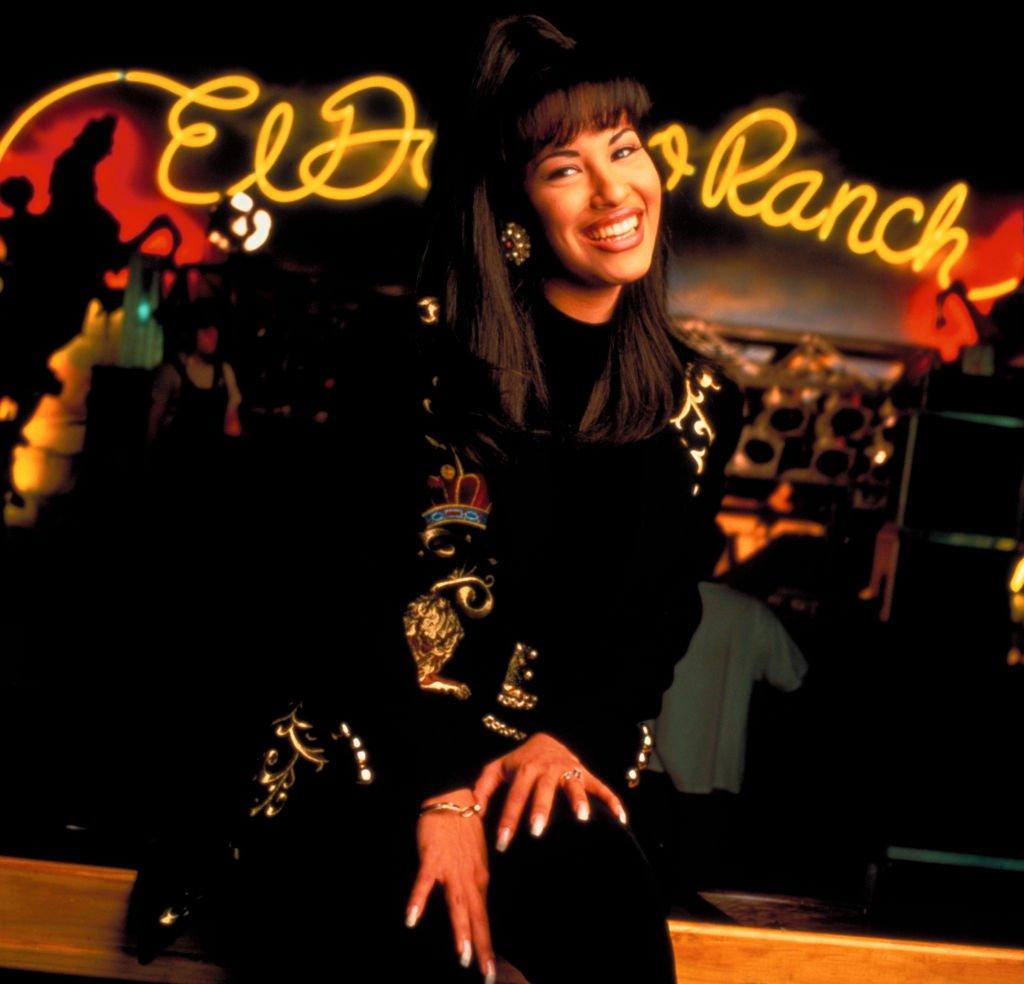
Selena
news
The Recording Academy Announces 2021 Special Merit Awards Honorees: Selena, Grandmaster Flash & The Furious Five, Talking Heads, Lionel Hampton, Marilyn Horne, Salt-N-Pepa And More
The honorees, which also include Trustees Award honorees Ed Cherney, Benny Golson and Kenny "Babyface" Edmonds and Technical GRAMMY Award recipient Daniel Weiss, will be recognized at the 2021 GRAMMYs on Sunday, March 14
The Recording Academy has announced the honorees for its 2021 Special Merit Awards. The Lifetime Achievement Award honorees are Grandmaster Flash & The Furious Five, Lionel Hampton, Marilyn Horne, Salt-N-Pepa, Selena, and Talking Heads. Ed Cherney, Benny Golson and Kenny "Babyface" Edmonds are Trustees Award honorees; Daniel Weiss is the Technical GRAMMY Award recipient. The honorees will be recognized on the 63rd Annual GRAMMY Awards on Sunday, March 14, 2021. Given the challenges imposed by the COVID-19 pandemic, more details about the special award presentation event will be announced at a later date.
"As we welcome the new class of Special Merit Award honorees, it gives us a chance to reward and recognize the influence they've had in the music community regardless of genre," Harvey Mason jr., Interim President/CEO of the Recording Academy, said. "As a music creator and music lover, I am grateful that we are able to look back at our influences and see the impact that they have made on our community. In a year where music has helped keep us together, I look forward to honoring this iconic group of music creators."
Formed in the South Bronx of New York City in 1978, Grandmaster Flash & The Furious Five are among the pioneers of hip-hop. The group's use of turntablism, break-beat deejaying, choreographed stage routines, and lyricism was a significant force in the early development of the genre.
Lionel Hampton* started his career as a drummer in Chicago in the 1920s before he played the vibraphone with Louis Armstrong. In the 1930s, he broke barriers with the Benny Goodman Quartet, one of the first integrated jazz bands in America. In the 1940s, he formed his own Lionel Hampton Orchestra, which became one of the longest-running orchestras in jazz history.
Marilyn Horne is one of the most prolific opera singers of our time. Over her six-decade career, she has garnered numerous honors, including four GRAMMY Awards, a Kennedy Center Honors, the National Medal of Arts, a Commander of the Order of Arts and Letters from France's ministry of culture, and a National Endowment for the Arts Opera Honors.
As one of the first all-female rap groups, Salt-N-Pepa broke down a number of doors for women in hip-hop. Formed in Queens, N.Y., in 1985, the group crafted hits such as "Push It," "Shoop," "Whatta Man," and the GRAMMY-winning "None Of Your Business." They were also one of the first rap artists to cross over, laying the groundwork for hip-hop's widespread popularity in the early '90s.
The Queen of Tejano, Selena* became a household name not long after her career took off in the 1980s. Her 1993 album, Live, won Best Mexican-American Album at the 36th Annual GRAMMY Awards, marking the first time a female Tejano artist won the category. Though her life was tragically cut short in 1995, Selena's crossover album, the posthumously released Dreaming Of You, sold 175,000 copies on the day of its release, a then-record for a female vocalist.
Talking Heads, formed in 1975 in New York City, helped to pioneer New Wave music by blending elements of punk, rock, art pop, funk, and world music with an avant-garde aesthetic. In 2002, 11 years after the group disbanded, they were inducted into the Rock And Roll Hall Of Fame.
Ed Cherney* was one of the most sought-after engineers in the industry. His four-decade career began as an assistant engineer working with Bruce Swedien and Quincy Jones on Michael Jackson's Off The Wall. Cherney went on to record, mix and engineer albums for artists such as The Rolling Stones, Bob Dylan, Iggy Pop, and Fleetwood Mac, among others. A four-time GRAMMY winner, he also founded the Academy's Producers & Engineers Wing.
Benny Golson is an international jazz legend who has composed more than 300 works over his 70-year career. He has composed and arranged music for artists such as John Coltrane, Miles Davis, Ella Fitzgerald, Dizzy Gillespie, Benny Goodman, and Lionel Hampton, and is the only living artist to write eight jazz standards. His prolific writing also includes scores for many hit TV series and films.
Kenny "Babyface" Edmonds is a poignant tunesmith, prolific producer, superstar recording artist, and revolutionary label owner. An 11-time GRAMMY winner, including a record four Producer Of The Year, Non-Classical awards, Babyface has been instrumental in the careers of artists such as Toni Braxton, Usher and TLC and has crafted hundreds of pop and R&B hits with artists including Whitney Houston, the Whispers, Brandy, Boyz II Men, Madonna, and Eric Clapton.
Daniel Weiss is one of the true pioneers of digital technology. In 1985, he founded Weiss Engineering Ltd. in Zurich, Switzerland. The company has designed and manufactured groundbreaking digital audio equipment for mastering studios, including the IBIS digital mixing console and the ultra-high-quality Gambit Series digital products.
The Lifetime Achievement Award celebrates performers who have made outstanding contributions of artistic significance to the field of recording, while the Trustees Award honors such contributions in areas other than performance. The Recording Academy's National Board of Trustees determines the honorees of both awards. Technical GRAMMY Award recipients are voted on by the Academy's Producers & Engineers Wing Advisory Council and Chapter Committees, and are ratified by the Academy's Trustees. The award is presented to individuals and companies who have made contributions of outstanding technical significance to the recording industry.
*Denotes posthumous honoree.
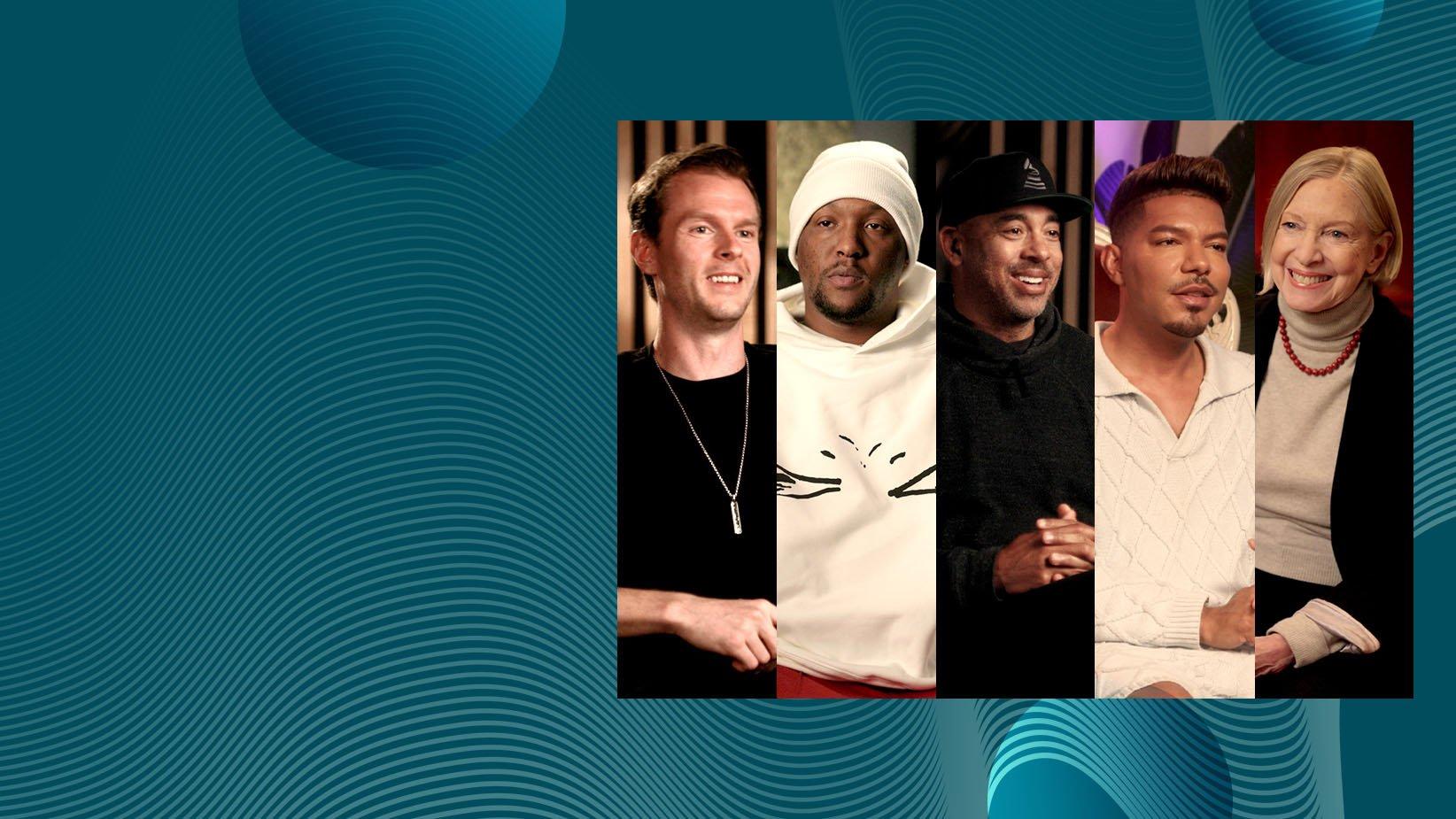
Photos Courtesy of the Recording Academy
news
The New GRAMMY GO Music Production Course Is Now Open: Featuring GRAMMY Winners Hit-Boy, CIRKUT, Judith Sherman & More
Enrollment is now open for GRAMMY GO's new specialization, "Music Production: Crafting Award-Worthy Songs," featuring appearances by GRAMMY winners and nominees. Learn music production and creative strategies from today's industry leaders.
Editor’s Note: Updated to add the Instagram Live video featuring Harvey Mason jr. and Stevie Mackey.
The Recording Academy continues its mission to empower music's next generation with the launch of its second specialization in the GRAMMY GO platform: "Music Production: Crafting Award-Worthy Songs."
This new course, a partnership between the Recording Academy and leading online learning platform Coursera, aims to bolster the technological and audio skills of music producers of all levels. The course, taught by Howard University professor and GRAMMY nominee Carolyn Malachi, features appearances by three-time GRAMMY winner and rap icon Hit-Boy, chart-topping and GRAMMY-winning producer/songwriter CIRKUT, artist and celebrity vocal coach Stevie Mackey, five-time GRAMMY nominee and Recording Academy CEO Harvey Mason jr., and 15-time GRAMMY winner Judith Sherman.
Enrollment for "Music Production: Crafting Award-Worthy Songs" is open now.
Mixing a unique blend of theory and practice, the course teaches music creators of all levels the advanced skills and tools to develop the mindset and confidence of an experienced producer and produce songs of the highest industry standards across all genres. Explore the wide-ranging roles of a music producer, develop critical listening and analysis skills, and master the technical aspects to create music and compositions that cut through the noise. The course's applied learning approach allows learners to sharpen their pre-production skills, utilize Digital Audio Workstations (DAWs) effectively, and produce vocals, instrumentals and samples collaboratively. Through critical listening exercises and discussions, learners will refine their abilities to deliver professional-quality demos.
To celebrate the launch, the Recording Academy hosted an Instagram Live session on Tuesday in which guests Harvey Mason jr. and Stevie Mackey discussed the evolving role of music producers, strategies for working with artists, key elements of top-notch productions, common mixing mistakes, tips for keeping the creative process fresh, and enrollment details for the course.
Building on the success of its first specialization, "Building Your Audience for Music Professionals," GRAMMY GO continues to offer industry-focused education tailored for emerging and established music creators and professionals alike. The innovative platform provides learners with real-time insights from leading music industry figures, ensuring the content remains practical and up to date. GRAMMY GO will also serve as an essential tool in the Recording Academy's global expansion into Africa and the Middle East, empowering music creators through enhanced training, bridging knowledge gaps, and fostering connections within the global music community.
Launched in April in partnership with Coursera, GRAMMY GO is the Recording Academy's first creator-to-creator platform, offering innovative courses tailored for both emerging and established music professionals. The initiative accelerates the Academy's global mission and reinforces its commitment to music education, providing a seamless bridge between all Academy initiatives.
Learn more about GRAMMY GO and the "Music Production: Crafting Award-Worthy Songs" and "Building Your Audience for Music Professionals" specializations.
Watch the Instagram Live session with Harvey Mason jr. and Stevie Mackey in full below:
More Music Education News & Initiatives
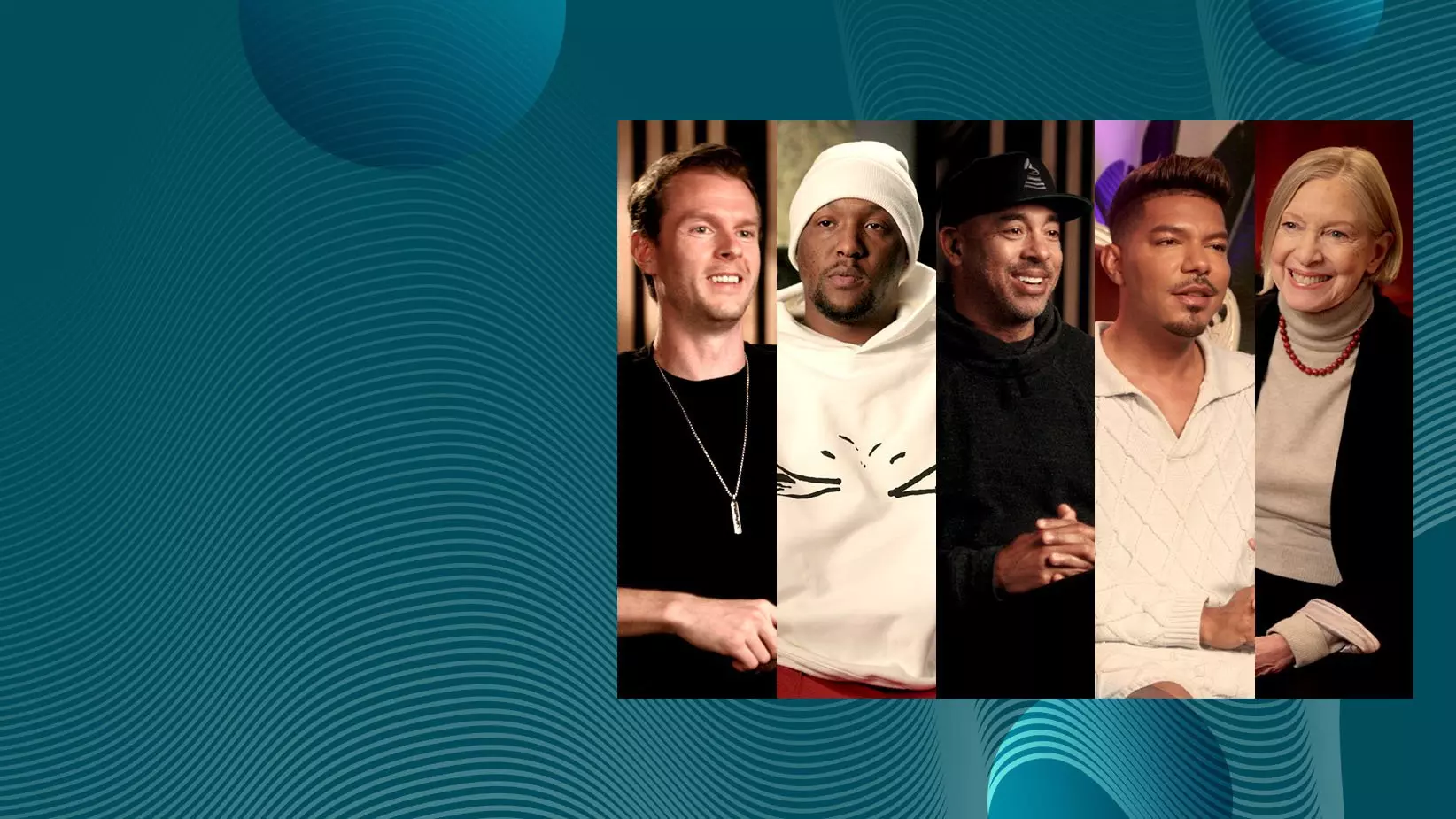
The New GRAMMY GO Music Production Course Is Now Open: Featuring GRAMMY Winners Hit-Boy, CIRKUT, Judith Sherman & More
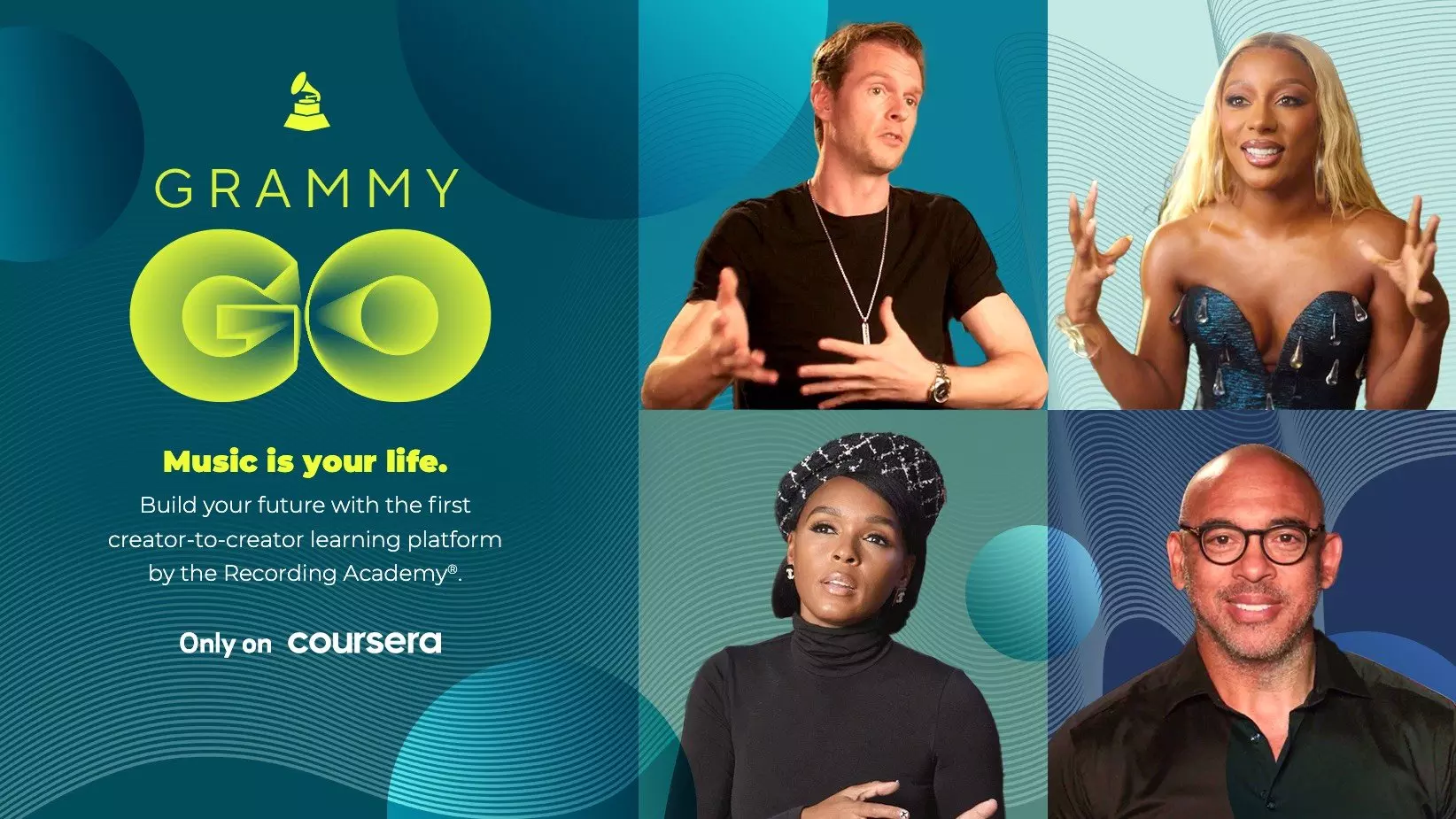
Recording Academy & Coursera Partner To Launch GRAMMY GO Online Learning Initiative
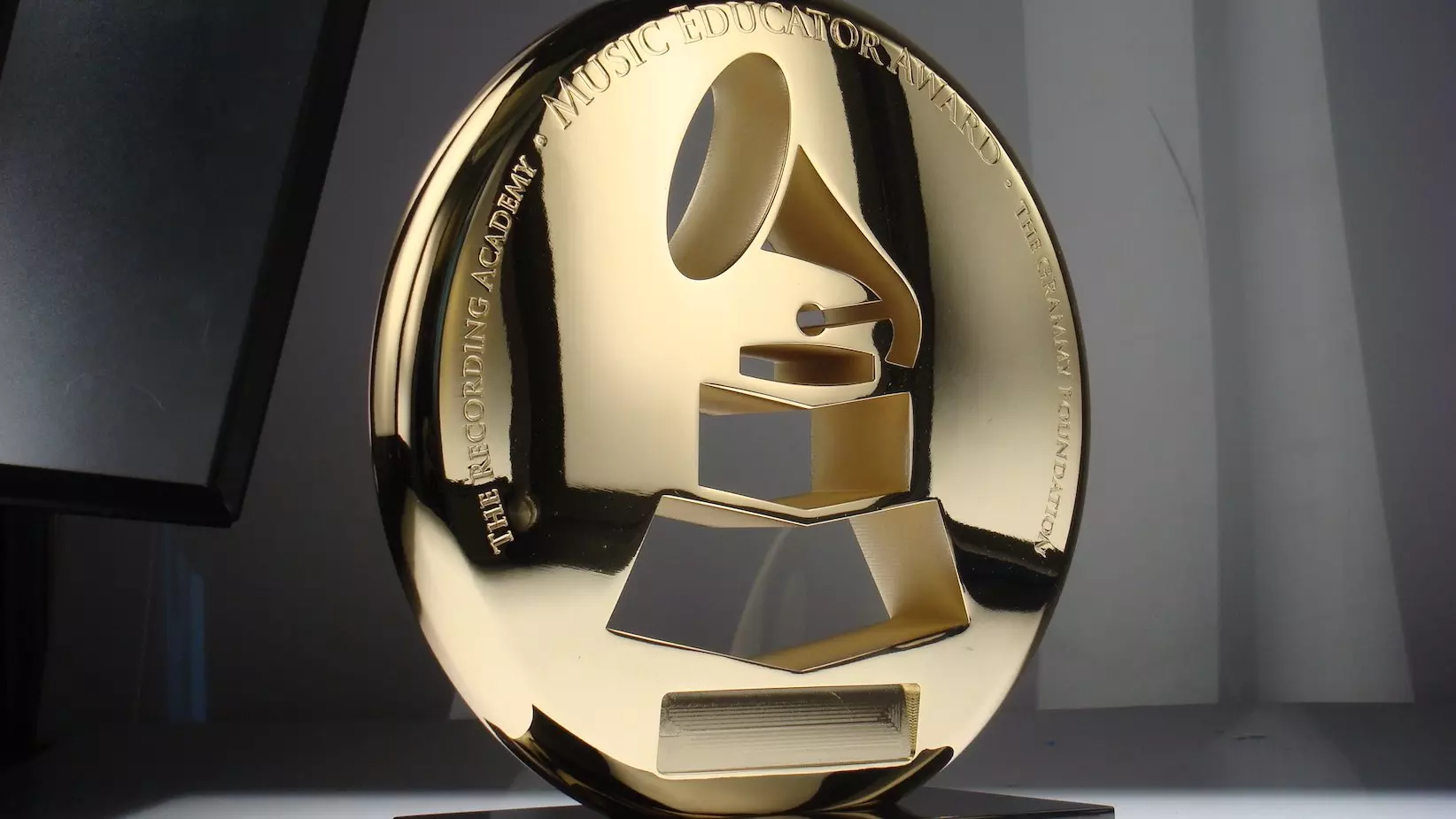
25 Semifinalists Announced For The 2024 Music Educator Award

5 Music Teachers Share The Transformative Power Of Music Education
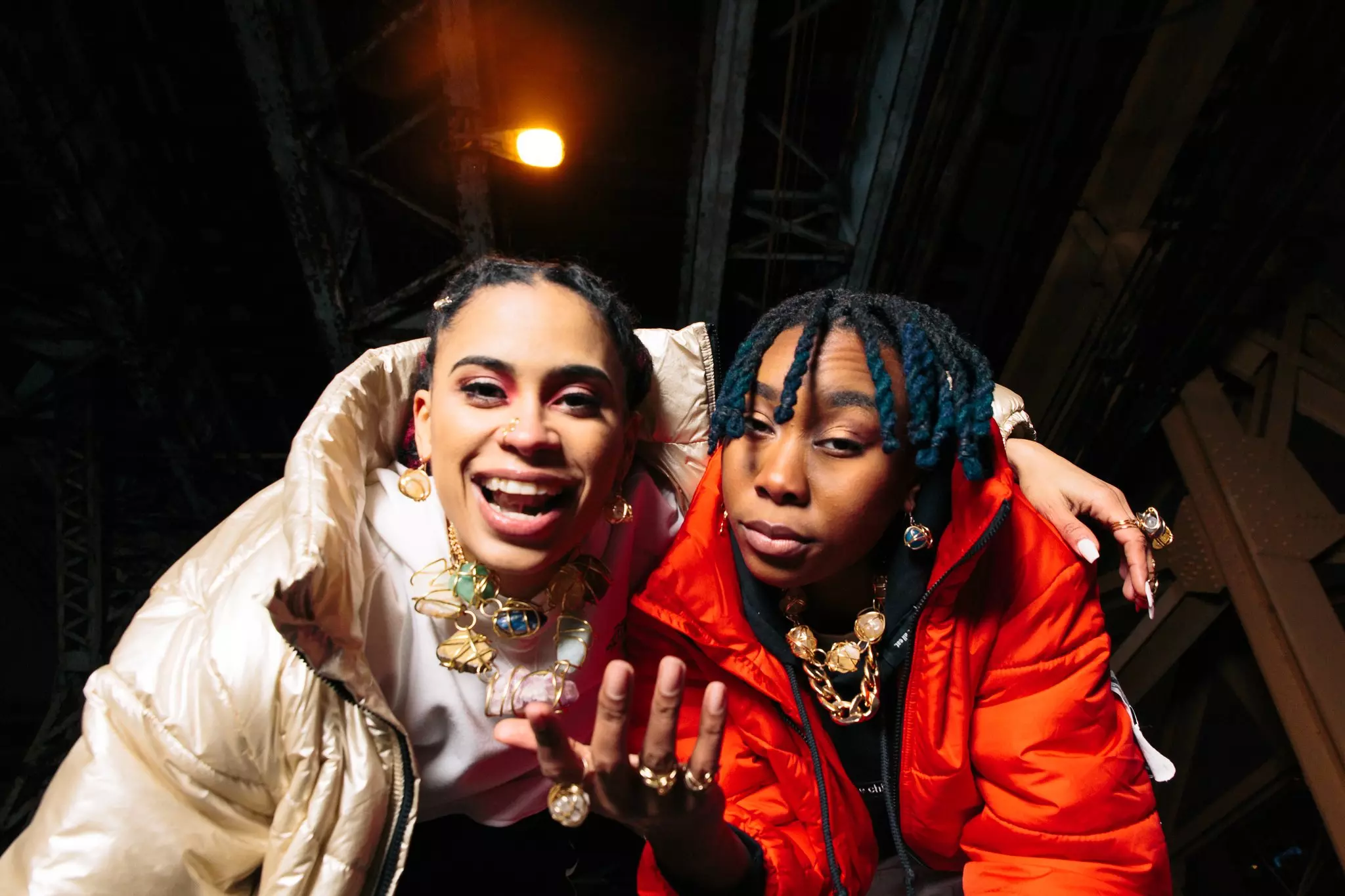
Meet Mother Nature, The Chicago Rap Duo That Teach & Live Self-Expression Through Their Miseducation Of HipHop Youth Workshops

Photo: Jathan Campbell
list
How Much Is A GRAMMY Worth? 7 Facts To Know About The GRAMMY Award Trophy
Here are seven facts to know about the actual cost and worth of a GRAMMY trophy, presented once a year by the Recording Academy at the GRAMMY Awards.
Since 1959, the GRAMMY Award has been music’s most coveted honor. Each year at the annual GRAMMY Awards, GRAMMY-winning and -nominated artists are recognized for their musical excellence by their peers. Their lives are forever changed — so are their career trajectories. And when you have questions about the GRAMMYs, we have answers.
Here are seven facts to know about the value of the GRAMMY trophy.
How Much Does A GRAMMY Trophy Cost To Make?
The cost to produce a GRAMMY Award trophy, including labor and materials, is nearly $800. Bob Graves, who cast the original GRAMMY mold inside his garage in 1958, passed on his legacy to John Billings, his neighbor, in 1983. Billings, also known as "The GRAMMY Man," designed the current model in use, which debuted in 1991.
How Long Does It Take To Make A GRAMMY Trophy?
Billings and his crew work on making GRAMMY trophies throughout the year. Each GRAMMY is handmade, and each GRAMMY Award trophy takes 15 hours to produce.
Where Are The GRAMMY Trophies Made?
While Los Angeles is the headquarters of the Recording Academy and the GRAMMYs, and regularly the home of the annual GRAMMY Awards, GRAMMY trophies are produced at Billings Artworks in Ridgway, Colorado, about 800 miles away from L.A.
Is The GRAMMY Award Made Of Real Gold?
GRAMMY Awards are made of a trademarked alloy called "Grammium" — a secret zinc alloy — and are plated with 24-karat gold.
How Many GRAMMY Trophies Are Made Per Year?
Approximately 600-800 GRAMMY Award trophies are produced per year. This includes both GRAMMY Awards and Latin GRAMMY Awards for the two Academies; the number of GRAMMYs manufactured each year always depends on the number of winners and Categories we award across both award shows.
Fun fact: The two GRAMMY trophies have different-colored bases. The GRAMMY Award has a black base, while the Latin GRAMMY Award has a burgundy base.
Photos: Gabriel Bouys/AFP via Getty Images; Frederick M. Brown/Getty Images
How Much Does A GRAMMY Weigh?
The GRAMMY trophy weighs approximately 5 pounds. The trophy's height is 9-and-a-half inches. The trophy's width is nearly 6 inches by 6 inches.
What Is The True Value Of A GRAMMY?
Winning a GRAMMY, and even just being nominated for a GRAMMY, has an immeasurable positive impact on the nominated and winning artists. It opens up new career avenues, builds global awareness of artists, and ultimately solidifies a creator’s place in history. Since the GRAMMY Award is the only peer-voted award in music, this means artists are recognized, awarded and celebrated by those in their fields and industries, ultimately making the value of a GRAMMY truly priceless and immeasurable.
In an interview featured in the 2024 GRAMMYs program book, two-time GRAMMY winner Lauren Daigle spoke of the value and impact of a GRAMMY Award. "Time has passed since I got my [first] GRAMMYs, but the rooms that I am now able to sit in, with some of the most incredible writers, producers and performers on the planet, is truly the greatest gift of all."
"Once you have that credential, it's a different certification. It definitely holds weight," two-time GRAMMY winner Tariq "Black Thought" Trotter of the Roots added. "It's a huge stamp as far as branding, businesswise, achievement-wise and in every regard. What the GRAMMY means to people, fans and artists is ever-evolving."
As Billboard explains, artists will often see significant boosts in album sales and streaming numbers after winning a GRAMMY or performing on the GRAMMY stage. This is known as the "GRAMMY Effect," an industry phenomenon in which a GRAMMY accolade directly influences the music biz and the wider popular culture.
For new artists in particular, the "GRAMMY Effect" has immensely helped rising creators reach new professional heights. Samara Joy, who won the GRAMMY for Best New Artist at the 2023 GRAMMYs, saw a 989% boost in sales and a 670% increase in on-demand streams for her album Linger Awhile, which won the GRAMMY for Best Jazz Vocal Album that same night. H.E.R., a former Best New Artist nominee, saw a massive 6,771% increase in song sales for her hit “I Can’t Breathe” on the day it won the GRAMMY for Song Of The Year at the 2021 GRAMMYs, compared to the day before, Rolling Stone reports.
Throughout the decades, past Best New Artist winners have continued to dominate the music industry and charts since taking home the GRAMMY gold — and continue to do so to this day. Recently, Best New Artist winners dominated the music industry and charts in 2023: Billie Eilish (2020 winner) sold 2 million equivalent album units, Olivia Rodrigo (2022 winner) sold 2.1 million equivalent album units, and Adele (2009 winner) sold 1.3 million equivalent album units. Elsewhere, past Best New Artist winners have gone on to star in major Hollywood blockbusters (Dua Lipa); headline arena tours and sign major brand deals (Megan Thee Stallion); become LGBTIA+ icons (Sam Smith); and reach multiplatinum status (John Legend).
Most recently, several winners, nominees and performers at the 2024 GRAMMYs saw significant bumps in U.S. streams and sales: Tracy Chapman's classic, GRAMMY-winning single "Fast Car," which she performed alongside Luke Combs, returned to the Billboard Hot 100 chart for the first time since 1988, when the song was originally released, according to Billboard. Fellow icon Joni Mitchell saw her ‘60s classic “Both Sides, Now,” hit the top 10 on the Digital Song Sales chart, Billboard reports.
In addition to financial gains, artists also experience significant professional wins as a result of their GRAMMY accolades. For instance, after she won the GRAMMY for Best Reggae Album for Rapture at the 2020 GRAMMYs, Koffee signed a U.S. record deal; after his first GRAMMYs in 2014, Kendrick Lamar saw a 349% increase in his Instagram following, Billboard reports.
Visit our interactive GRAMMY Awards Journey page to learn more about the GRAMMY Awards and the voting process behind the annual ceremony.

Photo: Kevin Mazur/Getty Images for Live Nation
list
10 Record Store Day 2024 Releases We're Excited About: The Beatles, Notorious B.I.G. & More
In honor of Record Store Day 2024, which falls on April 20, learn about 10 limited, exclusive drops to watch out for when browsing your local participating record store.
From vinyl records by the 1975 and U2, to album reissues and previously unreleased music, record stores around the world are stocking limited and exclusive releases for Record Store Day 2024.
The first Record Store Day kicked off in 2008 and every year since, the event supporting independently owned record stores has grown exponentially. On Record Store Day 2024, which falls on April 20, there will be more than 300 special releases available from artists as diverse as the Beatles and Buena Vista Social Club.
In honor of Record Store Day 2024 on April 20, here are 10 limited and exclusive drops to watch out for when browsing your local participating record store.
David Bowie — Waiting in the Sky (Before The Starman Came To Earth
British glam rocker David Bowie was a starman and an icon. Throughout his career, he won five GRAMMY Awards and was honored with the Lifetime Achievement Award in 2006.
On RSD 2024, Bowie's estate is dialing it back to his Ziggy Stardust days to make Waiting in the Sky (Before The Starman Came To Earth) available for the first time. The record features recordings of Bowie's sessions at Trident Studios in 1971, and many songs from those sessions would be polished for his 1972 album The Rise and Fall of Ziggy Stardust and the Spiders from Mars.
The tracklisting for Waiting in the Sky differs from Ziggy Stardust and features four songs that didn’t make the final album.
Talking Heads — Live at WCOZ 77
New York City-based outfit Talking Heads defined the sound of new wave in the late '70s and into the next decade. For their massive influence, the group received two GRAMMY nominations and was later honored with the Lifetime Achievement Award in 2021.
While promoting their debut album Talking Heads: 77, the quartet recorded a live performance for the New Albany, Pennsylvania radio station WCOZ in 1977. The Live at WCOZ 77 LP will include 14 songs from that performance at Northern Studios, including seven that will be released for the first time. Among the previously unheard cuts are "Love Goes To A Building On Fire" and "Uh-Oh, Love Comes To Town." During that session, Talking Heads also performed songs like "Psycho Killer" and "Pulled Up."
The Doors — Live at Konserthuset, Stockholm, September 20, 1968
The Doors were at the forefront of the psychedelic rock movement of the 1960s and early '70s. One of Jim Morrison's most epic performances with the band will be available on vinyl for the first time.
Live at Konserthuset, Stockholm, September 20, 1968 includes recordings from a radio broadcast that was never commercially released. The 3-LP release includes performances of songs from the Doors’ first three albums, including 1967’s self-titled and Strange Days. In addition to performing their classics like "Light My Fire" and "You're Lost Little Girl," the Doors and Morrison also covered "Mack the Knife" and Barret Strong's "Money (That's What I Want)" live during this session.
Dwight Yoakam — The Beginning And Then Some: The Albums of the '80s
Over the course of his 40-year career, country music icon Dwight Yoakam has received 18 GRAMMY nominations and won two golden gramophones for Best Male Country Vocal Performance in 1994 and Best Country Collaboration with Vocals in 2000.
On Record Store Day 2024, Yoakam will celebrate the first chapter of his legacy with a new box set: The Beginning And Then Some: The Albums of the '80s. His debut album Guitars, Cadillacs, Etc., Etc. and 1987’s Hillbilly Deluxe will be included in the collection alongside exclusive disc full of rarities and demos. The 4-LP set includes his classics like "Honky Tonk Man," "Little Ways," and "Streets of Bakersfield." The box set will also be available to purchase on CD.
The Beatles — The Beatles Limited Edition RSD3 Turntable
Beatlemania swept across the U.S. following the Beatles’ first appearance on "The Ed Sullivan Show" in February 1964, setting the stage for the British Invasion. With The Beatles Limited Edition RSD3 Turntable, the band will celebrate their iconic run of appearances on Sullivan’s TV program throughout that year.
The box set will include a Beatles-styled turntable and four 3-inch records. Among those records are the hits "I Want To Hold Your Hand," "Till There Was You," "She Loves You," and "I Saw Her Standing There," which the Beatles performed on Sullivan's TV across several appearances.
Among 23 GRAMMY nominations, the Beatles won seven golden gramophones. In 2014, the Recording Academy honored them with the Lifetime Achievement Award.
Olivia Rodrigo and Noah Kahan — From The BBC Radio 1 Live Lounge LP
Olivia Rodrigo and Noah Kahan are two of the biggest pop stars in the world right now — Rodrigo hitting the stage with No Doubt at Coachella and near the end of her global GUTS Tour; Kahan fresh off a Best New Artist nomination at the 2024 GRAMMYs. Now, they're teaming up for the split single From The BBC Radio 1 Live Lounge LP, a release culled from each artist's "BBC Radio 1 Live Lounge" sessions.
The special vinyl release will include Rodrigo's live cover of Kahan's breakout hit "Stick Season." The single also includes Kahan’s cover of Rodrigo’s song "Lacy" from her second album, GUTS. This month, they performed the song live together on Rodrigo’s Guts World Tour stop in Madison Square Garden.
Buena Vista Social Club — Buena Vista Social Club
Influential Cuban group Buena Vista Social Club popularized genres and sounds from their country, including son cubano, bolero, guajira, and danzón. Buena Vista Social Club's landmark self-titled LP won the GRAMMY for Best Tropical Latin Album in 1998.
The following year, a documentary was released that captured two of the band's live performances in New York City and Amsterdam. To celebrate the 25th anniversary of the documentary, the Buena Vista Social Club album will be released on a limited edition gold vinyl with remastered audio and bonus tracks.
Buena Vista Social Club is one of the 10 recordings to be newly inducted into the GRAMMY Hall Of Fame as part of the 2024 inductee class.
Danny Ocean — 54+1
Venezuelan reggaeton star Danny Ocean broke through on a global level in 2016 with his self-produced debut single "Me Rehúso," a heartbreaking track inspired by Ocean fleeing Venezuela due to the country's economic instability and the lover he had left behind.
With "Me Rehúso," Ocean became the first solo Latin artist to surpass one billion streams on Spotify, on the platform with a single song. "Me Rehúso" was included on his 2019 debut album 54+1, which will be released on vinyl for the first time for Record Store Day.
Lee "Scratch" Perry & The Upsetters — Skanking With The Upsetter
Jamaican producer Lee "Scratch" Perry pioneered dub music in the 1960s and '70s. Perry received five GRAMMY nominations in his lifetime, including winning Best Reggae Album in 2003 for Jamaican E.T.
To celebrate the legacy of Perry's earliest dub recordings, a limited edition run of his 2004 album Skanking With The Upsetter will be released on Record Store Day. His joint LP with his house band the Upsetters will be pressed on transparent yellow vinyl. Among the rare dub tracks on the album are "Bucky Skank," "Seven & Three Quarters (Skank)," and "IPA Skank."
Notorious B.I.G. — Ready To Die: The Instrumentals
The Notorious B.I.G. helped define the sound of East Coast rap in the '90s. Though he was tragically murdered in 1997, his legacy continues to live on through his two albums.
During his lifetime, the Notorious B.I.G. dropped his 1994 debut album Ready to Die, which is widely considered to be one of the greatest hip-hop releases of all-time. In honor of the 30th anniversary of the album (originally released in September '94), his estate will release Ready To Die: The Instrumentals. The limited edition vinyl will include select cuts from the LP like his hits "Big Poppa," "One More Chance/Stay With Me," and "Juicy." The album helped him garner his first GRAMMY nomination in 1996 for Best Rap Solo Performance. The Notorious B.I.G. received an additional three nominations after his death in 1998.
10 Smaller Music Festivals Happening In 2024: La Onda, Pitchfork Music Fest, Cruel World & More
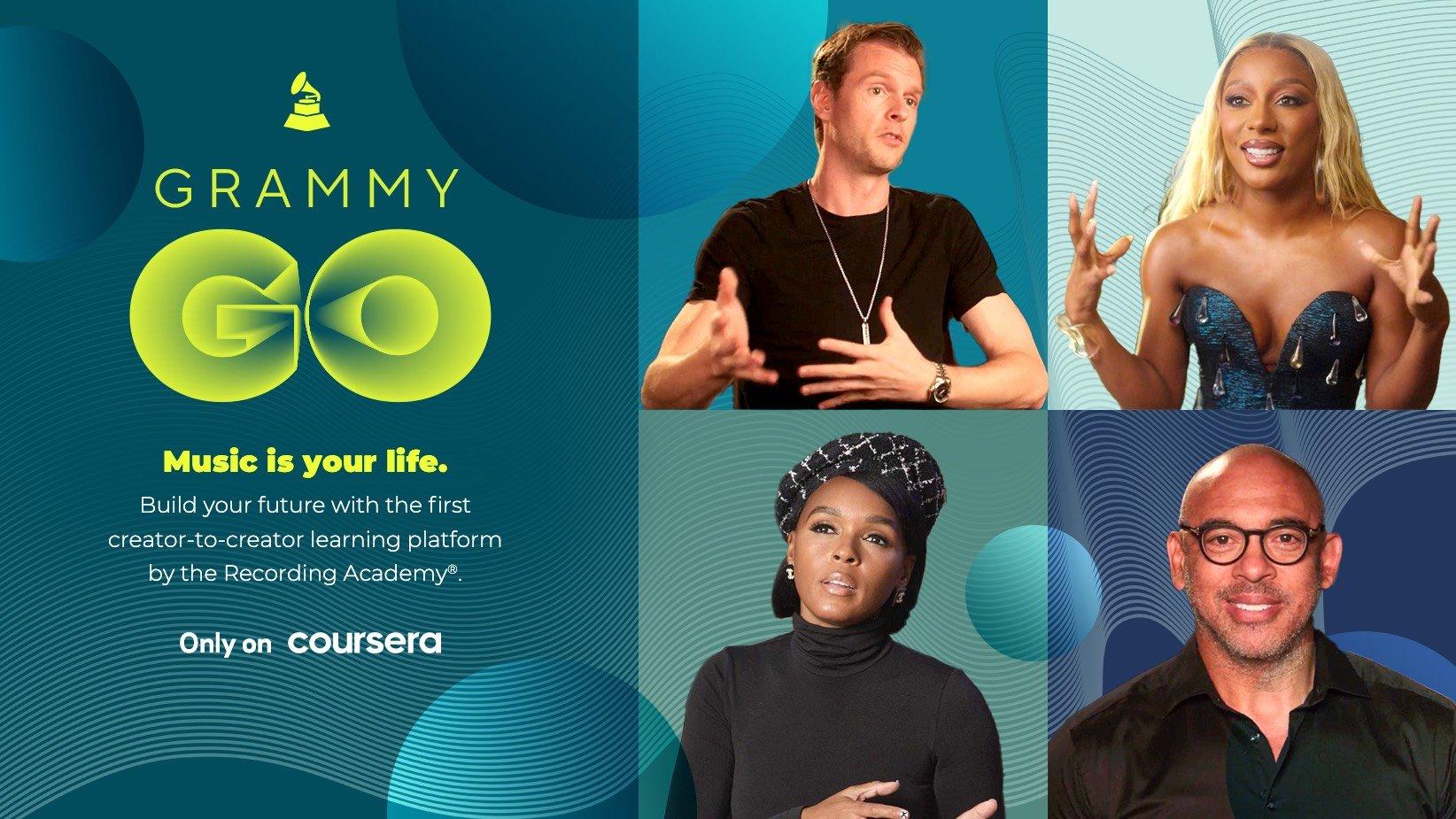
Graphic & Photos Courtesy of GRAMMY GO
news
Recording Academy & Coursera Partner To Launch GRAMMY GO Online Learning Initiative
Class is in session. As part of the Recording Academy's ongoing mission to empower music's next generation, GRAMMY Go offers digital content in specializations geared to help music industry professionals grow at every stage of their career.
The Recording Academy has partnered with leading online learning platform Coursera on GRAMMY GO, a new online initiative to offer classes tailored for music creators and industry professionals.
This partnership empowers the next generation of the music community with practical, up-to-the moment digital content that provides wisdom for both emerging and established members of the industry. Continuing the Academy’s ongoing mission to serve all music people, courses cover a variety of specializations tailored to creative and professional growth.
GRAMMY GO on Coursera includes courses taught by Recording Academy members, featuring GRAMMY winners and nominees and offers real-life lessons learners can put to work right away.
Starting today, enrollment is open for GRAMMY GO’s first Coursera specialization, "Building Your Audience for Music Professionals," taught by Joey Harris, international music/marketing executive and CEO of Joey Harris Inc. The course features Rock & Roll Hall of Fame inductee and five-time GRAMMY winner Jimmy Jam, 10-time GRAMMY nominee Janelle Monáe and three-time GRAMMY winner and the 2024 GRAMMYs Best New Artist Victoria Monét. This foundational specialization will help participants gain the skills, knowledge and confidence to build a strong brand presence and cultivate a devoted audience within the ever-changing music industry.
The partnership’s second course, launching later this summer, aims to strengthen the technological and audio skills of a music producer. "Music Production: Crafting An Award-Worthy Song" will be taught by Carolyn Malachi, Howard University professor and GRAMMY nominee, and will include appearances by GRAMMY winner CIRKUT, three-time GRAMMY winner Hit-Boy, artist and celebrity vocal coach Stevie Mackey, five-time GRAMMY nominee and Recording Academy CEO Harvey Mason jr., and 15-time GRAMMY winner Judith Sherman. Pre-enrollment for "Music Production: Crafting An Award-Worthy Song" opens today.
"Whether it be through a GRAMMY Museum program, GRAMMY Camp or GRAMMY U, the GRAMMY organization is committed to helping music creators flourish, and the Recording Academy is proud to introduce our newest learning platform, GRAMMY GO, in partnership with Coursera," said Panos A. Panay, President of the Recording Academy. "A creator’s growth path is ongoing and these courses have been crafted to provide learners with the essential tools to grow in their professional and creative journeys."
"We are honored to welcome GRAMMY GO, our first entertainment partner, to the Coursera community," said Marni Baker Stein, Chief Content Officer at Coursera. "With these self-paced online specializations, aspiring music professionals all over the world have an incredible opportunity to learn directly from iconic artists and industry experts. Together with GRAMMY GO, we can empower tomorrow's pioneers of the music industry to explore their passion today."
GRAMMY GO also serves as the music community’s newest digital hub for career pathways and editorial content that provides industry insights for members of the industry; visit go.grammy.com for more. For information and enrollment, please visit the landing pages for "Building Your Audience for Music Professionals" and "Music Production: Crafting An Award-Worthy Song."
